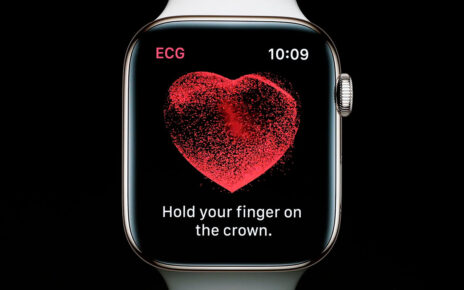A new study examining meme creation reveals that AI-generated captions on established meme templates can outperform human-written captions on average when it comes to humor, creativity, and shareability. Yet, the research also shows that the most remarkable memes tend to come from humans, either solo or in collaboration with AI, highlighting a nuanced balance between AI-driven broad appeal and human originality. The work, conducted by a multinational team of researchers and slated for presentation at a major international conference, probes how artificial intelligence and human creativity complement or compete in a realm where quick wit and cultural resonance often determine a meme’s impact. In short, AI can boost productivity and broaden appeal, but human insight remains essential for truly standout content.
Study Overview and Context
The study represents a concerted effort to dissect how different creative configurations perform in meme generation, specifically focusing on the captions that accompany familiar meme images. Rather than evaluating entirely new image generation, the researchers used widely recognized meme templates and explored how captions written by humans, AI, or a mixture of both affected perceived humor, creativity, and the likelihood that a meme would be widely shared. The work builds on the long-standing question inspired by the meme Turing Test: can a machine’s output be indistinguishable from human-made content in a domain where cultural nuance and timing are critical? While the test tradition is rooted in evaluating human-versus-machine indistinguishability, this study reframes the idea toward practical, content-creation outcomes—specifically, how AI-assisted processes stack up in everyday meme-making tasks.
The international collaboration brings together researchers from three prominent institutions: the Royal Institute of Technology in Sweden, LMU Munich in Germany, and TU Darmstadt in Germany. The cross-institutional setup enables a broad look at how AI tools perform across different cultural and linguistic contexts, and how collaborative dynamics between humans and AI influence the quality and appeal of memes. The study’s design includes three distinct creation scenarios, each intended to isolate the effects of human input, AI input, and human-AI collaboration on meme-caption quality. Although the study centers on a lighthearted domain, the underlying questions touch on broader themes in AI-assisted creativity: where does machine-generated content excel, where do humans still outperform, and how should creators balance these forces to achieve optimal results?
In framing the discussion, researchers emphasize that AI can raise productivity and help generate content that resonates with broad audiences. Yet the authors stress that content that truly connects—content that resonates on a deeper level—often hinges on human experiences, nuance, and sensitivity to evolving cultural moments. This tension between scalability and depth sits at the heart of the findings and invites readers to consider how AI should be integrated into creative workflows across domains beyond memes.
Methodology: How the AI and Human Teams Were Tested
The core of the study rests on a carefully constructed experimental design that pits three modes of meme-caption generation against one another. The first mode involves humans working alone to craft captions for a curated set of meme templates. The second mode pairs humans with an advanced large language model (LLM), specifically GPT-4o, to co-create captions in a collaborative setting. The third mode generates captions entirely with the AI model, without any human input. In all cases, the image templates used were pre-existing and widely recognizable memes, ensuring that the variable under test was the caption rather than the image composition itself.
Three relatable thematic categories—work, food, and sports—were chosen as the testing ground for humor and context. This categorization allowed the researchers to examine how familiar contexts might shape the reception of humor and the perceived shareability of memes. By incorporating these everyday domains, the study sought to capture how audience expectations and cultural references influence how well AI-generated versus human-generated content lands with viewers.
Importantly, the study refrained from creating original images; instead, it leveraged established templates to focus the investigation on caption quality and the interaction between AI and human cognition in the humor-generation process. This methodological choice helps isolate the captioning component, providing a clearer view of where AI can accelerate ideation and where human sensibilities remain indispensable for nuanced humor. The evaluation process relied on crowdsourced raters who assessed memes across three primary dimensions: humor, creativity, and shareability. Shareability, in particular, was defined as a meme’s potential to spread widely, influenced by how funny, relatable, and culturally relevant the caption and overall meme felt to the raters.
The research team also documented the practical side of AI-assisted creation: participants who used AI during the process reported generating more meme ideas and experiencing a smoother, less effortful workflow. This productivity boost, however, did not automatically translate into higher average scores across all memes, which led to nuanced conclusions about how AI augments creativity versus how it impacts the quality of standout pieces.
In interpreting the results, the researchers note that while AI can identify broadly appealing humor patterns by training on vast Internet data, human-created memes often draw on more personal or niche experiences. This distinction helps explain why AI-generated captions can perform well on average but sometimes trail the most memorable human creations when judged in isolation or by a discerning audience. The study also considers potential biases inherent in crowdsourced evaluation, acknowledging that broader, mainstream humor tendencies might skew results toward AI-generated captions that aim for wide appeal.
Categories and Context: How Context Shapes Humor and Shareability
Analysis across the work, food, and sports domains revealed notable differences in how AI and human captions were received. Memes dealing with work-related themes tended to score higher for humor and shareability than those centered on food or sports. This finding underscores the powerful influence of context on comedic resonance: workplace scenarios often involve universally relatable situations—bosses, meetings, deadlines—where shared experiences and common frustrations can amplify humor and relatability. In contrast, food- or sports-themed memes may depend more on niche experiences or current trends, which can limit broad appeal but offer rich opportunities for clever, context-specific humor that might thrill a smaller, highly engaged audience.
The study clarifies that AI’s strength in these patterns stems from its training on extensive, diverse Internet data, enabling it to recognize recurring humor motifs that tend to perform well across audiences. Humans, meanwhile, frequently leverage lived experiences and idiosyncratic perspectives, which can yield moments of exceptional wit that depart from the norm. The result is a nuanced spectrum: AI captions tend to be broadly appealing and reproducible at scale, while human-derived captions can capture distinctive viewpoints that may thrill certain groups or create memorable, conversation-worthy moments.
This contextual analysis also raises interesting questions about the role of algorithmic generalization in comedy. If AI excels at identifying and recycling widely resonant patterns, does it risk producing homogeneity in meme humor across genres? The study’s findings suggest a partial answer: AI captions can indeed reach a wider audience quickly, but the most lasting impact often comes from human originality or productive human-AI collaboration that yields innovations beyond what AI alone tends to generate. In practical terms, creators who aim for mass appeal might lean on AI to generate a broad set of ideas, while those seeking distinctive, standout content should prioritize human insight, with AI acting as a support tool rather than the sole source of creativity.
Findings: Average versus Best Memes, AI Versus Human
A central takeaway from the study is the differentiation between broad, average performance and peak individual creativity. When crowdsourced evaluators judged memes, the captions produced entirely by AI tended to fare better on average for humor, creativity, and shareability. This suggests that AI, trained on a wide spectrum of online humor, excels at producing captions that have wide appeal and a sense of timely relevance, making them highly transferable across contexts.
Yet, the researchers underscore an important caveat: the most exceptional memes—the standout examples that leave a lasting impression—often emerged from human creators, with or without AI collaboration. In other words, while AI can generate a broad base of memes that perform well on average, humans contribute the kind of originality and nuanced humor that can produce the truly memorable entries. In the best human-written memes, wit, cultural insight, and personal resonance combine to produce moments that AI struggled to replicate consistently.
When humans collaborated with AI, the results revealed a nuanced pattern. Memes produced through human-AI collaboration demonstrated the highest levels of creativity and shareability among some cohorts, suggesting that AI can augment creative capacity without eclipsing the distinctly human spark that leads to exceptional work. However, in aggregate terms, AI-assisted memes did not necessarily outperform human-created memes on average in every evaluated metric. The takeaway is not a simple victory for AI nor a blanket endorsement of human-only creation; rather, AI can significantly elevate productivity and broaden appeal, while human ingenuity remains essential for top-tier, standout memes.
The study also captured the dynamics of ideation and execution. AI-assisted participants reported generating markedly more meme concepts and described the process as easier. Despite this surge in idea generation, the overall rating of AI-assisted memes did not surpass that of memes produced by humans alone in every evaluation. The researchers summarized this paradox by noting that the efficiency gains from AI can generate more output, but not necessarily higher-quality results across the board. The practical implication is that AI tools can serve as powerful accelerants in the creative workflow, expanding the pool of ideas and lowering the entry barrier for aspiring meme creators, while still requiring human curation and refinement to reach the pinnacle of comedic impact.
Ownership and agency figures also surfaced in the findings. Participants who used AI assistance reported feeling slightly less ownership over their final memes compared with solo creators. Since a robust sense of ownership is tied to motivation and satisfaction in creative work, this insight carries practical weight for teams and individuals considering AI as a collaborative partner. The researchers propose that creators interested in adopting AI should deliberately balance the degree of AI assistance to maintain a healthy sense of authorship while benefiting from the productivity gains and expanded ideation that AI offers.
The paper highlights concrete examples of the memes that illustrate these dynamics. Visual diagrams in the study depict workflows where AI contributes as a partner in idea generation and refinement, as well as cases where AI-driven captions demonstrate strong average appeal but where human-curated selections yield the most memorable results. These visual showcases help convey the practical implications of the findings, showing that AI’s role in meme creation can be highly productive and broadly appealing, yet not a guaranteed path to the most creatively outstanding work.
AI-Assisted Productivity and Creative Ownership
Beyond averages and top memes, the study delves into how AI assistance affects the creative process itself. A notable trend is that AI support tends to generate more meme ideas, broaden the range of potential captions, and, on balance, make the creation process feel easier and less labor-intensive. This productivity boost is a practical advantage for creators facing tight deadlines or heavy content calendars, enabling them to produce more content in less time and experiment with a wider array of comedic approaches.
However, the researchers emphasize that this heightened output does not automatically translate into higher-quality outcomes across all memes. While AI-assisted workflows can yield more memes that perform reasonably well on humor and shareability, the best memes—those that capture a distinctive voice or timely nuance—often arise from human effort or carefully curated human-AI collaboration. In other words, more content does not equate to better content; strategic use of AI as a generator and assistant is essential to preserving quality and originality.
Ownership dynamics also shift in AI-assisted workflows. Participants who employed AI reported a diminished sense of ownership over their creations, which could influence long-term motivation and satisfaction. The researchers suggest that teams and individuals should design AI integration strategies that preserve authorship sentiment, perhaps by designating clear roles for AI in the ideation phase and for human editors in the refinement and final approval stages. The aim is to harmonize efficiency gains with a renewed sense of creative ownership, ensuring that AI acts as a catalyst rather than a detraction from personal authorship.
In practical terms, the findings imply several actionable strategies for meme creators and content teams. First, harness AI to rapidly generate a broad pool of ideas and identify patterns that tend to yield broad appeal. Then, use human curation to select, refine, and enhance the most promising candidates, infusing them with individual voice, context-aware humor, and culturally resonant touches that the AI may overlook. Finally, structure workflows to maintain a sense of ownership for contributors by clearly delineating responsibilities and recognizing the contributors’ creative authorship in the final product.
The study’s conclusions in this area point toward a hybrid model of creative production: AI handles the bulk of ideation and broad testing, while humans provide the strategic steering, nuanced humor, and personal connection that make memes stand out in the crowded landscape of online content. In this model, AI serves as a powerful amplifier of creativity rather than a replacement for human ingenuity.
Limitations and Caveats of the Study
No study is without limitations, and this one is no exception. The researchers acknowledge that the caption-creation sessions were relatively brief, potentially constraining the depth of AI-human collaboration and the exploration of more sophisticated prompting strategies. Longer-term use of AI tools might reveal different dynamics, with more extensive interaction potentially yielding higher-quality outcomes as users become more adept at guiding the AI’s output.
Crowdsourced evaluators, while effective for capturing broad public sentiment, introduce subjectivity and potential biases toward more mainstream or conventional humor. This factor could bias results in AI-generated captions that optimize for broad appeal rather than niche or deeply satirical humor. The study suggests that future work could incorporate expert panels or targeted demographic groups to better capture nuanced and culturally specific aspects of humor and creativity. Such diversification of evaluators would help discern how different audiences perceive and value AI-generated versus human-generated memes.
Another limitation concerns the lack of original image creation in the study. By using established templates, the researchers focused on caption quality, but the dynamics could differ if AI were tasked with generating entirely new meme images or if image and caption generation were integrated more holistically. Exploring joint image-caption generation could yield insights into whether AI’s broader creative capacity scales differently when both components are synthesized together, rather than when the meme image is fixed and only the caption is varied.
The study also contemplates the ecological validity of the meme domain. Memes are a fast-evolving, culturally dynamic form of humor, and results observed in one set of templates and contexts may shift as memes evolve and new cultural references emerge. Longitudinal research could examine how AI’s performance in humor creation tracks with changing meme conventions, platform-specific dynamics, and evolving audience expectations. In addition, cross-cultural studies could illuminate how AI’s patterns align or diverge across languages and regional humor norms, enriching our understanding of AI’s global applicability in creative tasks.
From the authors’ perspective, future work could explore rapid-generation pipelines in which AI produces multiple ideas quickly, and humans act primarily as curators who select, refine, and elevate the best options. This model emphasizes the curation phase as a critical differentiator for quality, suggesting that the most impactful memes may arise when AI contributes a generous pool of options followed by careful human selection and enhancement. The overarching takeaway remains that humans are still central to meme greatness, even as AI accelerates ideation and broadens reach.
Interpretations and Expert Reactions
Reaction to the study has sparked discussion about what AI’s success in average scores means for the future of humor and digital culture. One prominent perspective, drawn from a respected AI scholar, emphasizes that AI’s strong average performance likely reflects the model’s proficiency at identifying widely shared humor patterns that resonate across diverse audiences. This interpretation suggests that AI’s strength lies in recognizing common ground and leveraging it to generate broadly appealing content. It also points to the possibility that AI can help democratize meme creation by lowering barriers to entry and enabling a wider range of creators to participate in rapid content generation.
Conversely, critics caution against overreliance on AI for humor creation, arguing that meaning and cultural resonance often hinge on personal narratives, insider jokes, and nuanced social commentary that AI may struggle to capture. The tension between AI’s broad appeal and human-centric humor is framed as a reminder that the most memorable memes frequently emerge from intimate observations, surprising twists, and creative risk-taking that push beyond familiar patterns. The study’s nuanced findings, which show AI-generated memes excelling on average but humans delivering the funniest and most creative standouts, reflect this ongoing tension.
The authors underscore that AI’s measured success in humor creation should not be mistaken for a wholesale replacement of human creativity. Rather, AI serves as a powerful tool that can broaden the scope of meme ideas, accelerate the generation process, and help creators test humor concepts at scale. The crucial takeaway for practitioners is to embrace a collaborative model that leverages AI to generate diverse options while relying on human judgment to select and refine those options into content that resonates on a deeper, more personal level.
In the broader context of AI in creative work, the study contributes to a growing conversation about how machines can augment human talent without erasing the value of human perspective. The results encourage content creators to experiment with AI-assisted workflows, not as a shortcut to better memes, but as a means to expand ideation, enhance productivity, and ultimately preserve the distinctive voice that makes creative output memorable.
Implications for Meme Culture and AI in Creative Work
The findings carry implications that extend beyond memes into the wider realm of creative practice in the age of AI. On one hand, AI-assisted captioning can democratize content creation by offering a scalable means to generate lots of humorous and relatable material quickly. For creators facing tight publishing schedules or aiming to reach broader audiences, AI can function as a brainstorming partner that kickstarts ideas and surfaces patterns that might otherwise be missed.
On the other hand, the research reinforces the enduring importance of human nuance in crafting standout content. The best memes—those that captivate audiences through wit, originality, and timely cultural insight—result from a creator’s personal experiences and perceptive humor. The human ability to tailor humor to specific moments, communities, and subcultures remains a critical differentiator, especially for content that aspires to be iconic or deeply resonant.
In practical terms, teams might structure their creative processes to combine AI’s strengths in rapid ideation with human editors’ capacity to infuse voice, ethical considerations, and cultural sensitivity. This approach could help mitigate risks associated with over-reliance on generalized humor patterns while preserving the benefits of AI-driven efficiency. Organizations could also use AI as a tool for experimentation, rapidly testing thousands of caption concepts, then curating the most compelling options for final production, with humans ensuring alignment with brand voice and audience expectations.
The study also highlights a potential cultural trend: as AI-generated humor becomes more prevalent, audiences may grow more tolerant of a certain level of familiarity in memes, while simultaneously seeking occasional leaps in originality that challenge expectations. That dynamic invites creators to think strategically about when to lean into AI’s broad appeal and when to push beyond conventional patterns for moments of surprise and innovation. The balance between reliability and surprise may become a defining feature of future meme ecosystems, shaping what gets noticed, shared, and remembered.
Future Directions and Research Ideas
Looking ahead, the researchers propose several avenues for expanding understanding of AI in meme creation and, more broadly, in creative practice. One key direction involves extending the experimental framework to longer-term use of AI tools, allowing participants to develop deeper proficiency with prompting, iteration, and collaboration. Longer sessions could reveal whether extended interaction with AI leads to higher-quality memes, especially in the realm of nuanced humor and cultural specificity.
Another promising area is exploring different prompting strategies and interaction models. By testing a broader range of prompts, user interfaces, and collaboration protocols, researchers could identify best practices that maximize the benefits of AI-assisted creativity while minimizing potential drawbacks, such as reduced ownership or homogenization of output.
A further line of inquiry involves diversifying the evaluators beyond crowdsourced participants. Incorporating expert reviewers or more targeted demographic groups could help capture subtler distinctions in humor across cultures, languages, and subcultures. Such approaches would help detect biases and ensure that findings generalize across varied audiences and contexts.
Additionally, studies could investigate the dynamics of joint image-caption generation, where AI systems are involved in producing both the meme image and its caption. This direction would address questions about how AI handles multimodal humor, the interplay between visual cues and textual punchlines, and whether integrated AI generation changes the balance between broad appeal and distinctive creativity.
The authors also envision practical experiments in real-world content pipelines, examining how AI-assisted meme production performs in live social media environments with real-time feedback, audience engagement, and dynamic cultural trends. Such field studies could illuminate how AI tools perform under practical constraints, including platform-specific norms, moderation considerations, and audience feedback loops.
In sum, the study opens multiple pathways for future research that could deepen our understanding of how AI can support and augment human creativity in meme-making and other creative domains. The overarching conclusion remains that AI can amplify capabilities and broaden reach, but the distinctive, high-impact moments in humor still hinge on human insight, storytelling, and cultural savvy. The evolving collaboration between humans and machines promises to continue redefining what is possible in digital culture—and how creators approach the delicate balance between efficiency, originality, and resonance.
Conclusion
The study presents a nuanced portrait of AI’s role in meme creation. AI-generated captions can outpace human-produced captions on average for humor, creativity, and shareability when applied to established meme templates, underscoring AI’s capacity to identify broadly appealing patterns quickly and at scale. Yet the most memorable memes—those that resonate deeply and endure across communities—remain the domain of human creators, whether working solo or in collaboration with AI. The work highlights a productive middle ground: AI acts as a powerful ideation and productivity tool, expanding the pool of potential captions and accelerating the generation process, while humans provide the distinctive voice, contextual sensitivity, and risk-taking that yield standout content.
At the same time, the study uncovers practical considerations for integrating AI into creative workflows. While AI can boost output, it does not automatically deliver higher-quality results across the board, and creators using AI may experience a diminished sense of ownership over their work. The findings suggest that successful adoption of AI in meme creation—and, by extension, in other creative tasks—lies in deliberately balancing AI assistance with human curation and authorship, ensuring that AI serves as a collaborator that broadens possibilities without erasing the human touch that makes content memorable.
As meme culture and AI technologies continue to evolve, the study’s insights offer a roadmap for practitioners aiming to maximize both reach and impact. By leveraging AI to generate diverse ideas and testing them at scale, while applying human judgment to select and refine the most compelling options, creators can harness the strengths of both agents. The future of meme creation—and perhaps broader creative practice—will likely be characterized by increasingly sophisticated human-AI collaborations that combine efficiency with ingenuity, broad appeal with personal voice, and rapid experimentation with thoughtful curation. In that sense, the essential verdict remains clear: humans are, and will remain, the champions of memorable meme captions, even as AI becomes a indispensable part of the creative toolkit.



